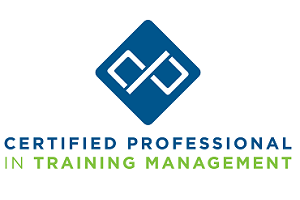Embarking on the journey of organizational restructuring is no small feat. Yet, when mergers and acquisitions enter the equation, the complexity multiplies. Suddenly, alongside internal restructuring, there’s the added layer of integrating another entity or entities into the fold.
In acquisitions, the path seems clearer; the acquired company generally aligns with the practices and tools of its new parent. But in mergers, the road ahead is less certain. Which practices and tools will prevail? It’s a puzzle demanding careful navigation.
As a learning and development (L&D) leader in the world of mergers, you’re tasked with a dual mission: first, integrating the L&D teams of both companies to support the merger and ongoing operations; second, identifying the necessary upskilling for leadership teams to steer the merger, particularly in communication and change management.
Securing Leadership Alignment and Collaboration
To set the stage for success as an L&D leader during a merger, proactively securing a seat at the leadership table is key. By actively participating in discussions and planning sessions, you can ensure that your insights and expertise contribute to shaping the path forward. You also ensure your L&D teams are properly resourced to support merger activities as well as ongoing business needs.
Additionally, fostering a culture of open communication among L&D leaders from both organizations is pivotal throughout the merger process. Emphasizing collaboration and shared goals enables you to leverage each other’s strengths and create solutions that align with business strategies.
While integrating with an existing L&D leader from the merging company may present unique opportunities, it’s essential to approach this collaboration as a partnership rather than a competition. By aligning on overarching objectives and finding common ground, you can leverage collective wisdom to drive business outcomes.
To streamline the transition, gaining clarity on the overarching strategy of the new organization post-merger is essential. This strategic focus supports cohesive and impactful learning and development strategies that align with the organization’s vision and goals.
At the senior leadership level, establishing clear roles and responsibilities between the two L&D leaders is vital. Whether functioning as equal partners in decision-making or designating specific areas of ownership, clarity fosters accountability and ensures a seamless integration process.
Integrating L&D Teams
Navigating the integration of L&D teams from multiple organizations poses one of the most formidable challenges for an L&D leader, perhaps one of the most challenging in their career. Mergers seldom retain all employees, necessitating difficult decisions regarding staffing, budget allocations, and program continuity. The task of determining who to retain, which tools to preserve, and which programs to continue can feel overwhelming.
However, adhering to the Training Process Framework taught in the Certified Professional Training Management (CPTM™) program provides a structured approach to help you effectively navigate this complexity. By aligning L&D strategies with strategic business priorities, L&D leaders can ensure a seamless transition while continuing to meet ongoing business needs.
Ideally, as a leader within the organization, you would have the opportunity to analyze and propose the L&D strategy. However, before delving into current state and conducting a needs analysis, it’s crucial to seek initial guidance from senior leadership:
- Define the roles and responsibilities of the L&D leadership team to ensure clarity and alignment.
- Identify essential training programs that must continue during the merger to maintain business continuity.
- Gain an understanding of the new strategic goals and priorities for the newly merged organization.
- Determine the timeline for transition, considering whether a phased approach is feasible to manage the integration process effectively.
- Address the new budget and budget model going forward, whether tasked with proposing changes or adapting to new fiscal constraints.
- Anticipate and plan for headcount changes expected as a result of the merger, ensuring a smooth transition for affected team members.
Once equipped with strategic direction from senior leadership, the subsequent phases of departmental integration are multifaceted and tailored to each organization’s unique circumstances. However, adhering to best practices alongside the principles of the CPTM™ can significantly enhance the likelihood of navigating a successful merger.
Analysis:
- Conduct a comprehensive current state analysis, examining existing training programs, technologies, and redundancies.
- Perform a needs analysis to understand business requirements and identify underlying issues, including root causes.
Develop solutions:
- Utilize gathered information to prioritize training offerings using the Portfolio Rationalization Four Quadrant Model.
- Make recommendations to stakeholders regarding the L&D organizational model and org chart, budget proposals, proposed transition timelines, future training courses, programs, and technologies.
- Define success metrics to measure the effectiveness of the proposed solutions.
Deliver solutions:
- Implement agreed-upon solutions while adhering to change management best practices.
- Measure the success of implemented solutions against defined metrics.
- Solicit feedback from stakeholders to assess effectiveness and identify areas for improvement.
- Continuously refine and improve solutions based on feedback and evolving organizational needs.
By following these structured phases and leveraging the Training Process Framework, L&D leaders can effectively harmonize departmental teams, drive successful integration and ensure ongoing strategic alignment.
Upskilling Leadership for Effective Communication and Change Management
While mergers undeniably present complex challenges and can induce anxiety across affected organizations, there’s a ray of optimism. L&D leaders possess the unique ability to empower leaders with the essential skills and expertise needed to confidently navigate communication and change management during a merger. It’s crucial, however, to clarify that while L&D is not directly responsible for managing the change or organizational communication, its role lies in equipping organizational leaders with the necessary skills to effectively lead through the transition. These programs should focus on areas such as effective communication strategies, managing resistance to change, conflict resolution, and fostering a culture of collaboration.
Here’s a simple checklist you can follow to support the merger:
- Assessment of Current Skills: Conduct an assessment to identify the current skills and competencies of organizational leaders in communication and change management.
- Identify Skill Gaps: Determine the gaps between the current skills and the skills required to effectively manage communication and change during a merger.
- Delivery: Determine the most critical training needs, most effective modalities, sourcing model and learner audience.
- Ongoing Support and Resources: Offer ongoing support and resources to reinforce learning and facilitate skill development. This may include access roundtables and mentorship opportunities or curating content such as relevant books, articles and case studies.
- Monitor Progress and Adjust: Continuously monitor the progress of leaders in developing their communication and change management skills. Adjust training programs as needed based on feedback and changing organizational needs.
Closing Thoughts: L&D’s Impact on Merger Success
Throughout the merger process, effective communication and stakeholder alignment are paramount. While stakeholder feedback is valuable, it’s important not to get bogged down in analysis paralysis. Ultimately, all decisions must be anchored in the strategic priorities outlined in the merger plan, while simultaneously ensuring continuity of business operations.
L&D leaders play a pivotal role in driving the success of the merger and shaping the future of the organization post-merger. By equipping leaders with the essential skills and expertise needed to navigate communication and change, L&D leaders contribute significantly to the seamless integration of teams and the realization of strategic objectives.
As the dust settles and the organization emerges from the merger, the impact of effective learning and development initiatives becomes apparent. With a focus on strategic alignment, continuous improvement and a commitment to excellence, L&D leaders pave the way for a stronger, more resilient organization poised for success.





